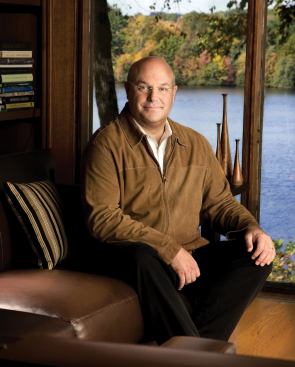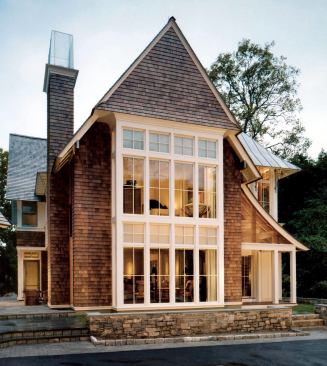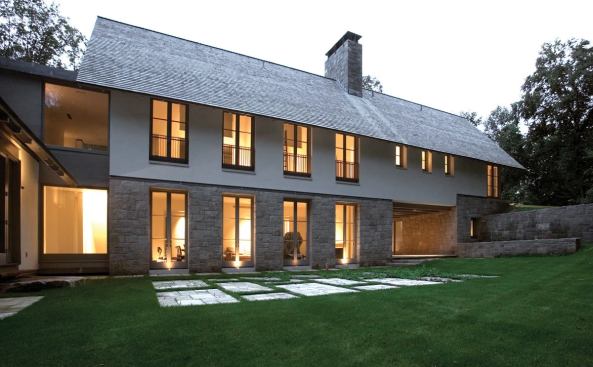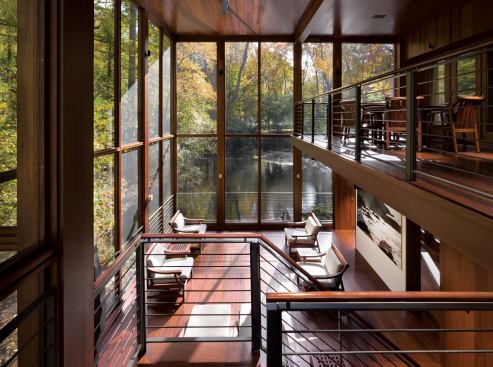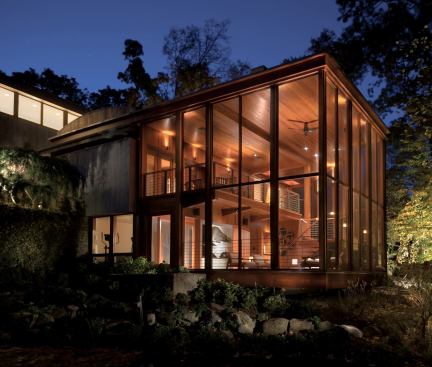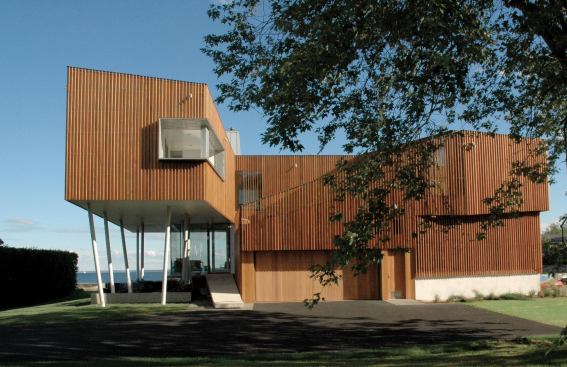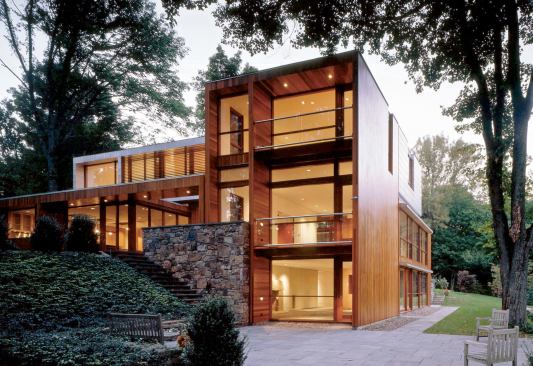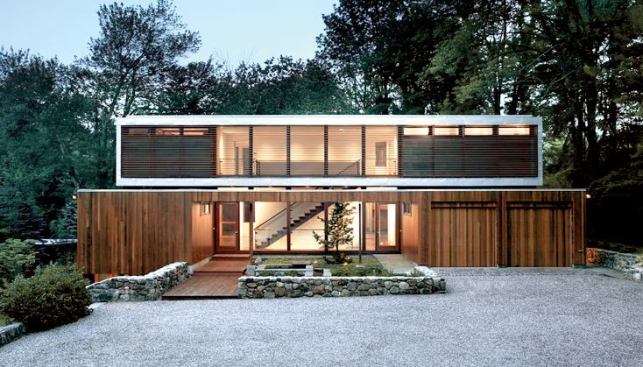Tracey Kroll
Joeb Moore reinterprets familiar materials and forms in fresh, o…
On any given project, Moore tries to distill the design to a single thought, and the process includes building an early-concept model that’s used as a reference point when making decisions about construction details. “If you can’t reduce your idea to one sentence in writing, it’s a problem,” he says, “because the process builds up through accumulation and accretion. If it’s not clear on mood, it will get lost by all the systemization and means and ends and become just a sum of its parts, instead of something that transcends.”
In the case of the recently completed Coastal Residence, the idea took shape around the board-and-batten siding that characterized late 19th-century New England architecture. Elevated above the floodplain on stilts, the building starts as a glassy rectangle but then twists and folds, sheltering an interior courtyard. Moore cloaked those shifting geometries in yellow cedar vertical battens that produce a moire effect as one circles the building. The seashell-like spiral is one of the oldest motifs in architecture, and he used it to play with the contrast between dynamic and static views: the rectangle’s “flattened million-dollar picture,” juxtaposed with the oblique, changing perspectives created by the spiral. Moore’s design also addresses the main complaint about modernism—that it’s too clinical and transparent. “How do I create varying levels of transparency—through lattice, courtyards, and materials—to get to a modernism that’s sensitive to what we find comfortable and protected, yet has that openness to nature that every client loves?” he asks.
As Moore’s body of new work grows, he plans to continue the restoration projects that have been part of his practice from the beginning. Among them are a 1910 house by McKim, Mead and White; a Noyes pool house in New Canaan; and a Richard Neutra house in Stamford, Conn. With a keen eye on history, he hopes to expand on the brightest ideas architecture can offer. “When you step into a space that inspires you, you’ll know,” Moore says. “Holding on to the art of construction in the consumerist-driven landscape of residential design is hard to do. I’m trying to promote that distinction but not erase it; if anything, I’m trying to make people more aware of what’s positive about the culture we live in.”
